|
|
 |
|
|
NATO Forces Spotlight: Belgian Forces
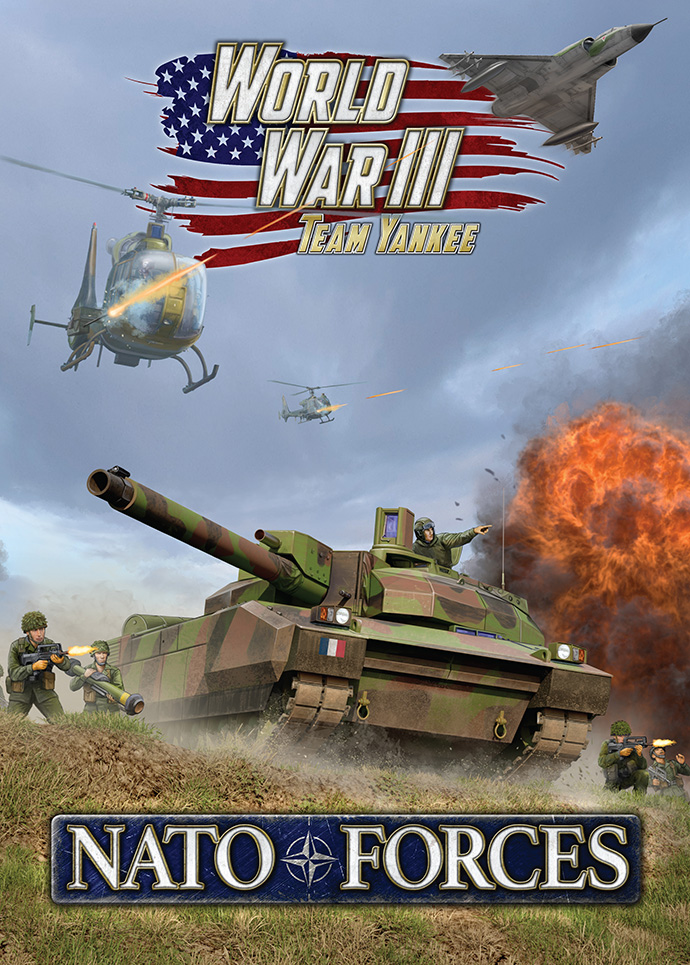 |
World War III: NATO Forces Design Notes
Belgian Forces
with Wayne Turner
Back in 2018, we released Free Nations as our first multi-national book for Team Yankee. It added four more nations to the roster of forces with which to play. Free Nations started as an idea to add some of the forces of the smaller NATO nations but grew into something a little more when it was suggested we add the French. The project transformed from a loose idea to do some downloadable content, into a fully-fledged book with four Western nations (well, technically five if you choose to run your ANZACs as New Zealanders).
We have now further expanded this book into World War III: NATO Forces by expanding the forces and units available to the original four choices, and have also added a fifth nation, the Belgians.
|
|
So, what do you get?
Inside you will find five different forces from four NATO nations (Canada, France, Netherlands, and Belgium) and the closely allied ANZACs (a combined Australian and New Zealand force). It also includes three Scenarios featuring the Canadians, French and Dutch.
|
|
 |
|
World War III: NATO Forces also adds another member nation of NATO to the mix of World War III: Team Yankee. The Belgians can field three different Formations, the Leopard 1 Tank Eskadron, AIFV Infanterie Compagnie, and the Verkennings Eskadron.
Like many nations, the Belgians adopted the West German Leopard 1 as their main battle tank. The Leopard 1 Tank Eskadron has an HQ of one Leopard 1, and two to four Leopard 1 Tank Peloton each with three Leopard 1 tanks, a Gepard Pantserluchdoel Peloton, and a Scimitar Verkennings Troep. The fourth Leopard 1 Tank Platoon can be an AIFV-B or M113 Infanterie Peloton instead.
The Belgian Leopard 1 tanks have recently upgraded making them the same standard as the West German 1A5 version. They have Bazooka Skirts, Infra-red (IR) for night fighting, Laser Rangefinder and Stabiliser for more accurate fire. Like most Leopard 1 tanks, they have Front Armour 9, Side 5, and Top 1. However, their excellent 105mm L7 gun can deal with most Warsaw Pact tanks and the Stabiliser allows them to fight on the move very effectively.
|
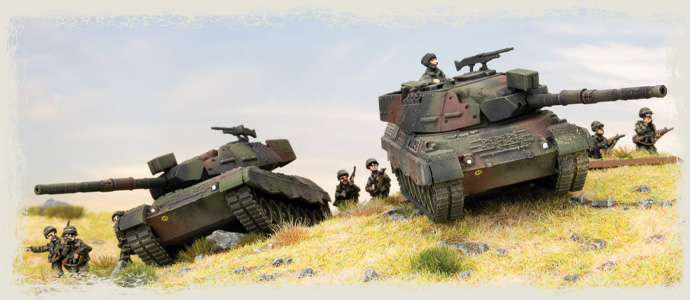 |
|
The Belgian Infanterie Compagnie is a Formation containing an HQ with a FAL rifle team, a Blindicide anti-tank team, and an AIFV-B-C25 infantry fighting vehicle. The HQ can optionally take an M113 or AIFV-B-.50 as a transport. The rest of the formation is two to three AIFV-B or M113 Infanterie Pelotons, with the third choice also including a Leopard 1 Tank Peloton, a Kanonenjagdpanzer Antitank Peloton or Milan Antitank Peloton, a M106 Mortier Peloton, and a Scimitar Verkennings Troep.
Each AIFV-B Infanterie Peloton has seven FN-FAL & MAG teams with LAW anti-tank, one Blindicide anti-tank team, and a 60mm mortar transported in four AIFV-B-C25 infantry fighting vehicles, which are the same as the Dutch YPR-765. The FN-FAL & MAG teams with LAW anti-tank have good firepower with ROF 2/1 and LAWs give them anti-defence against lighter vehicles (AT 12). For heavier close-range armoured targets, they can call on the Blindicide with AT 14. The Blindicide (which is basically a Super Bazooka) can be replaced by the more modern APILAS with AT 21. They can also add optional Milan or Milan 2 ATGMs (Range 8”/20cm - 36”/90cm, ROF 1, AT 21 or 24, FP 3+, with Guided, HEAT and Thermal Imaging).
|
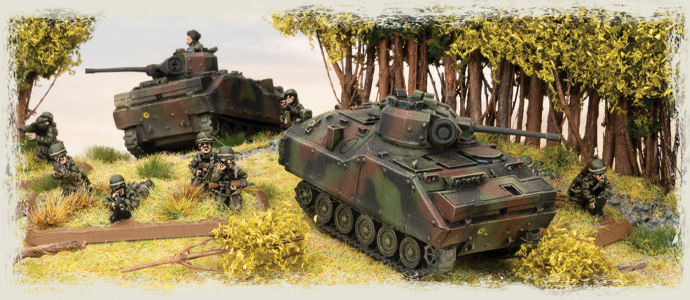 |
|
The AIFV-B-C25 is armed with a 25mm gun in an offset turret with a co-ax machine-gun. It has Armour of Front 3, Side 2, and Top 1. The vehicle also has the Milan Mount rule.
The M113 Infanterie Peloton is organised identically except the infantry are mounted in M113 APCs armed with .50 cal machine-guns. Some units are mounted in the AIFV-B-.50, which is the un-turreted AIFV-B armed with a .50 cal machine-gun in a cupola.
When the West Germans started rearming some of their second armoured units with Leopard 1 tanks, the Belgians received 80 former West German Kanonenjagdpanzer tank-hunters. A Kanonenjagdpanzer Antitank Peloton has three or four Kanonenjagdpanzer tank-hunters. This has front armour 6, side 3, and top 1. They are armed with a 9cm L/40 gun with a Range of 32”/80cm, ROF 2/1, Anti-tank 16, FP 3+, with Forward Firing, HEAT, and a Lazer Rangefinder.
The other anti-tank option is the Milan Antitank Peloton made up of two to four Milan or Milan 2 Missile teams mounted in AIFV-B-.50 transports. The AIFV-B-.50 transports have the Milan Mount rule allowing these weapons to fire from the vehicle while the team is a passenger.
|
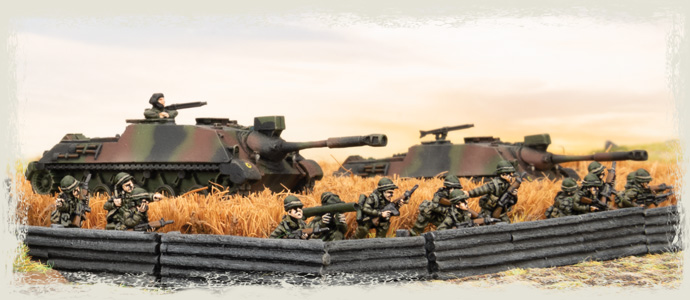 |
|
The M106 mounted the original American 107mm (4.2-inch) heavy mortar. The M106 Mortier Peloton provides indirect fire support to the infantry.
The last Belgian Formation is the Verkennings Eskadron or Reconnaissance Squadron. This unit is equipped with British CVR (T) Scimitar, Scorpion, Spartan, and Striker vehicles. The Formation contains an HQ with two Spartans, two to three Scimitar or Scorpion Verkennings Troep, a Spartan Stormaanval Troep, and a Striker Geleide Wapens Troep.
A Verkennings Troep (Reconnaissance Troop) contain three or four Scimitars or Scorpion light recon vehicles. The Scimitar is armed with a 30mm L21 Rarden gun with Range 24”/60cm, ROF 3/2, AT 10, FP 5+, and Sneak and Peek. The Scorpion has the 76mm L23 gun with Range 24”/60cm, ROF 2/1, AT 14, FP 2+, HEAT, Smoke, Sneak and Peek. Sneak and Peek limits their Tactical movement to 6”/15cm, but they can move Tactical 10”/25cm if they just fire their 7.62mm MG. Both Units have Scout, Spearhead, and Infra-red (IR).
|
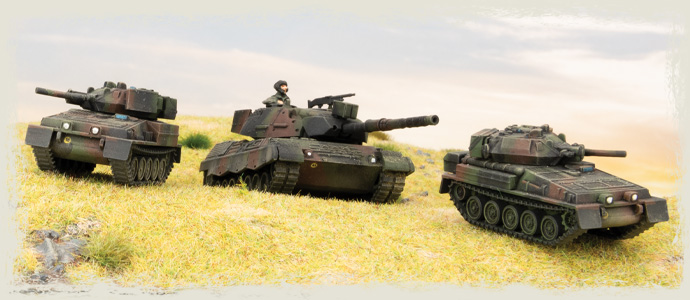 |
|
The Striker Geleide Wapens Troep (Guided Weapons Troop) has two to four Strikers. The Striker is armed with the British Swingfire missile (Range 8”/20cm – 48”/120cm, ROF 1/-, AT 23, FP 3+, Guided, HEAT).
The infantry component of the Verkenning Eskadron was the Spartan Stormaanval Troep (Assault Troop). Four FN FAL teams with LAW anti-tank are mounted in four Spartan APCs.
All the vehicles of this formation have Armour Front 2, Side 1, Top 1.
|
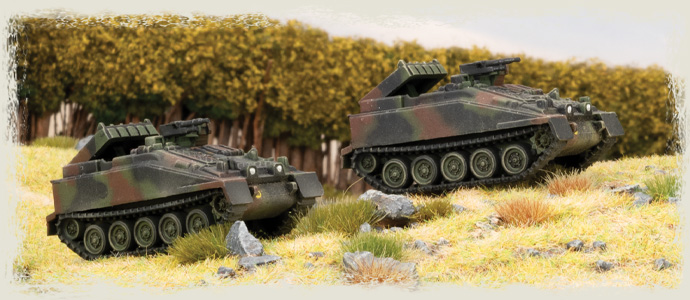 |
|
Support
The Belgian artillery support consists of long-barrelled M109 self-propelled howitzers in batteries of 2 or 4. The 155mm howitzer has an artillery range of 96”/240cm, AT 4, FP 2+ and can fire Smoke Bombardments.
A Gepard Pantserluchtdoel Peloton (Armoured Anti-aircraft Platoon) and an artillery observer are also available as support units.
Air support comes from the Mirage 5 Jager Vlucht (Fighter Flight). These are similar to the French aircraft of the same type. They have BL-755 cluster bombs and 30mm auto-cannons.
|
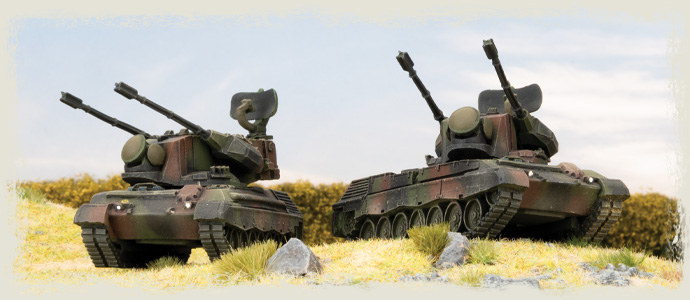 |
|
The Belgians also call on West German or British support units. The West German units available are the Roland Flarakpanzer Batterie, a LARS Raketenwerfer Batterie, and up to two PAH Anti-tank Helicopter Flights.
British Units available include Challenger or Chieftain Armoured Troops, FV432 or Warrier Mechanised Platoons, and up to two TOW Lynx HELARM Flights.
They can also take an Allied NATO formation as part of their force.
|
| |
|
Bonus Content
At the back of World War III: NATO Forces you will also find two pages on NATO Missile Upgrades. This section allows you to field West German, British, and American forces with the newer versions of anti-tank guided missiles (this will also be available as a PDF download).
West Germans can take Milan 2 and HOT 2, the British can take Milan 2, and the Americans can take M47 Dragon 2 missiles.
The Milan 2 increases the missile’s anti-tank to 24.
The HOT 2 increases the missile’s anti-tank to 24
The M47 Dragon 2 increases the missile’s anti-tank to 21.
Like many of these upgrades, where a Unit has a choice, all Units in the Force must take the same type.
|
|
Scenarios
As well as the five forces, World War III: NATO Forces also includes three scenarios featuring Canadian, Dutch and French forces. These can be played with the suggested forces, or you can use the suggested points to field alternative forces in the scenarios. The scenarios can be run as a linked campaign, or as individual one-off games.
|
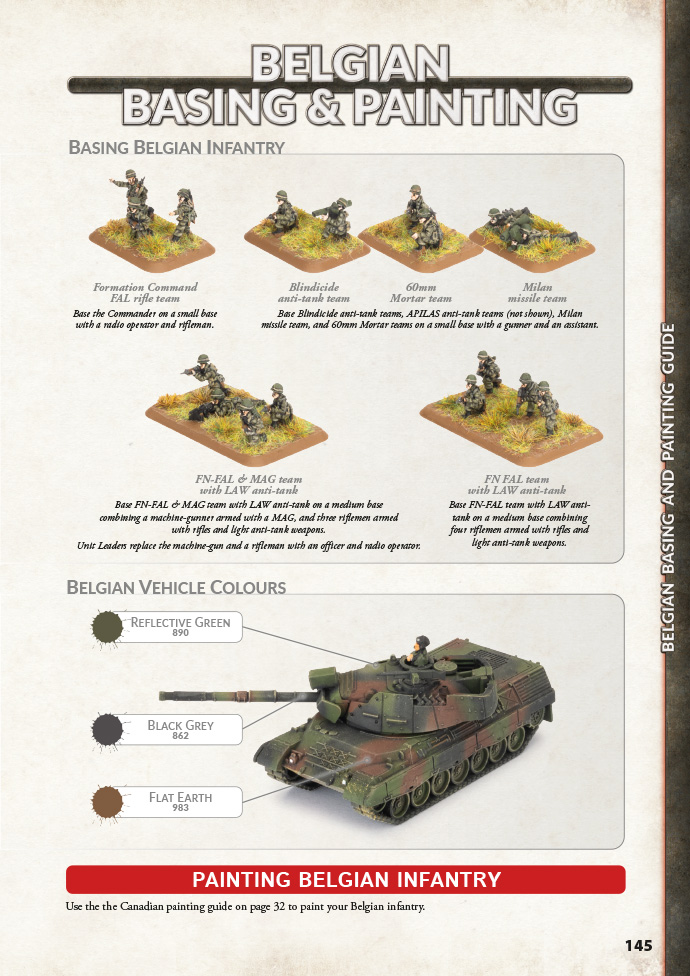 |
Painting and Models
The final sections in each nation’s part of World War III: NATO Forces include painting and basing guides. This includes armour painting for Yellow Olive and NATO 3-colour, infantry painting guides for Australians, French, Canadians, Dutch, and Belgians, and aircraft colour guides. Basing guides for the teams of World War III: NATO Forces infantry forces.
After each nation section, there is a comprehensive guide to the models of World War III: NATO Forces, listing all the great new boxes and packs that will be coming out for the Canadians, French, Dutch, ANZACs, and Belgians.
It’s a great new book with plenty of forces to choose from, whether you a looking for a new NATO force to field or looking at adding a new formation to a current NATO force.
~Wayne
|
|
|
|